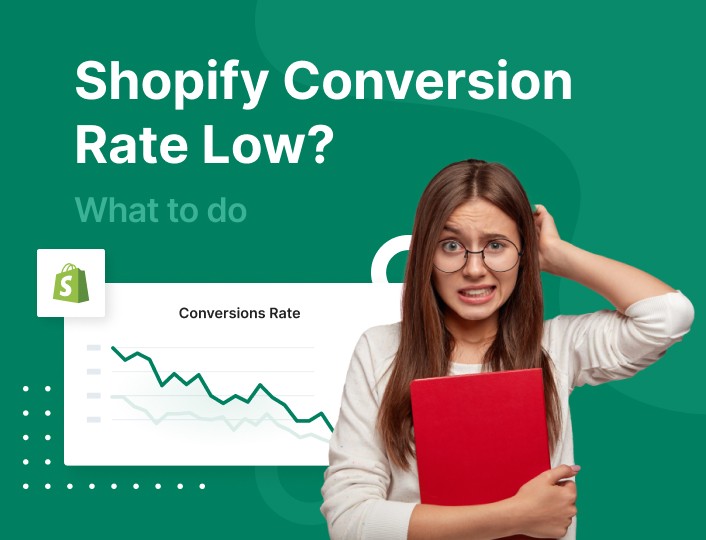Low conversion rates aren’t good for any business. And your Shopify store isn’t an exception.
Maybe you even get many visitors to your Shopify store, but no sales to show for it. In this case, getting more traffic won’t cut it. You don’t get to sit on your palms waiting for a miracle to happen either.
In this post, I will be showing you a couple of strategies to make your Shopify website convert better.
But first, let’s discuss possible reasons why your Shopify conversion rates are low.
Reasons Why Your Shopify Conversion Rate is Low
1. You’re Targeting the Wrong Market
As a business owner, it might look attractive to pitch your products to anyone and everyone. Well, news flash! Not everyone is interested in your product. One reason your Shopify might be failing to make sales is that you are marketing to the wrong group of people.
This is why it is important to study and understand your market. Shopify makes this easy for you by providing you with the necessary tools to help you understand your visitors’ interactions on your website. With this insight, you can see which groups of people are most interested in your products.
2. Your Landing Page Isn’t Attractive
First impressions, they say, matter. Nothing could be farther from the truth. So, you really need to make a good impression, particularly on first-time visitors to your website.
If your landing page isn’t attractive, you will very likely have problems with conversions. No one likes tacky designs, and it is a quick turn-off for shoppers.
3. You Sell Products People Are Unfamiliar With
Are you selling a relatively novel product? Be ready for an uphill battle.
Getting your visitors to see your product is great. But what if they have no idea what it’s meant for? If your website is getting a lot of traffic but not converting as it should, it might be because no one is familiar with your product.
If they don’t know what it is, how will they know its usefulness? How will they know what value they will be getting for their money after purchasing your product?
4. Poor Product Images
People need to see what they are buying. If they can’t, they will gladly go somewhere else. This is why having high-quality images of your product is important.
This probably explains why your Shopify store might not be making sales.
Poor product images will make your store seem unprofessional and untrustworthy, so avoid them like a plague.
5. Mediocre Call-to-actions (CTA)
Sometimes, buyers need a ‘push’ to get them to make a purchase. Your CTA might be missing that needed push.
So, if your CTAs aren’t clear and convincing enough, making sales will be a problem.
6. Absence of Reviews
When buying online, people will consciously look for reasons to trust your brand. And it’s from the reviews of previous buyers that they will find this trust.
So, reviews should never be missing from your Shopify website, or else you will drive your visitors away.
7. Difficult Checkout Process
No one likes difficulties, not even when they are shopping for their favorite clothes or accessories. Long and complicated checkout processes make it difficult for your visitors to buy from your store.
But how do you know if your checkout process is difficult? Long and lengthy form fields, absence of multiple payment options, etc., are all signs of it.
So, if any of those is present on your website, they might be hurting your conversions.
8. Absence of Popups
Contrary to popular opinion, popups are very useful in eCommerce. Though they might not look like much, top-performing popups can boost your conversion rates by up to 28%.
Thus, if you aren’t using popups on your Shopify store, there’s no reason to be surprised if your traffic isn’t converting.
9. You Don’t Use an Email Marketing Service
While getting new visitors is good, retaining old customers is even better. If you don’t use email service providers like MailChimp or SendinBlue, how would you connect to those customers?
Email marketing is important to the growth of your store. As such, if you haven’t taken it seriously, it’s about time you did, especially if improving your website’s conversion means anything to you.
10. Not Testing Your Strategies
Carrying out A/B tests will give you insights into what sort of marketing content your visitors interact with best on your Shopify store. Not carrying out these tests will keep you guessing every time.
So, if a particular campaign strategy isn’t working for you, don’t be afraid to try out others.
How to Increase Your Shopify Conversion Rate
Increasing your Shopify conversion rate is not as difficult as it seems. It simply involves tweaking some of the already existing elements on your Shopify store.
I want to share with you some of those tweaks. These tips will not work overnight, but in the not-too-long run, they will. Tremendously.
Here they are:
1. Optimize Your Checkout Process
Like I mentioned earlier, simplifying your checkout process will go a long way in improving your website’s conversion. If your checkout is complex and confusing, most customers will not bother to complete their purchases.
Here are some ways for improving your website’s checkout process:
- Reduce the number of fields to fill out.
- Show checkout progress as a bar or simply put the checkout in stages so customers know how far they’ve gone in the process.
- Make it easy to review carts before purchase.
Optimizing your store’s checkout process is one step towards increasing your store’s conversion rate in Shopify.
2. Provide Multiple Payment Options
Another way to improve your Shopify conversion rate is by providing multiple payment methods. Don’t just limit payments to PayPal.
Make it easy for your customers to make payments via other means like Visa card, MasterCard, Credit Cards, American Express. Do that and you will see your Shopify conversion rate soar.
It is very frustrating and disappointing for potential buyers to find out that they cannot make a purchase simply because they do not have the accepted payment method.
3. Improve Mobile Experiences
Not taking mobile seriously yet? Well, here is an interesting fact you need to know:
OuterBox conducted a survey in 2018 over a 6-month period. One of the interesting things they discovered was that 79% of online sales within that period came from mobile. That’s huge, isn’t it?
This is clear proof that optimizing your Shopify store for mobile can impact your conversion rates positively and incredibly.
Be aware that this trend isn’t going away and purchases made via phones are going to increase. Go the extra mile to optimize your Shopify to work seamlessly on mobile devices. If not, you’ll be forfeiting sales from people who like to shop on the go.
4. Enable Guest Checkouts
Imagine for a moment you went shopping in a mall. After picking up the items you came for, you wheeled your trolley to the cashier to make payments. But to your rudest shock, you are asked to fill a membership form before that can happen.
Wouldn’t that be annoying? And if there was another shop nearby, that might have you hurrying out of there.
Your first-time visitors feel the same way when they have to create an account on your website to complete their purchase.
What to do? Enable the guest checkout option. This will allow new users to make purchases without having to create an account on your Shopify store.
According to Econsultancy, 8 out of the top 10 retail stores in the US offer guest checkout options. It must be working for them, don’t you think?
Asos, one of these stores, increased their conversion rates by 50% after including “continue to checkout”- a guest checkout option- on their store.
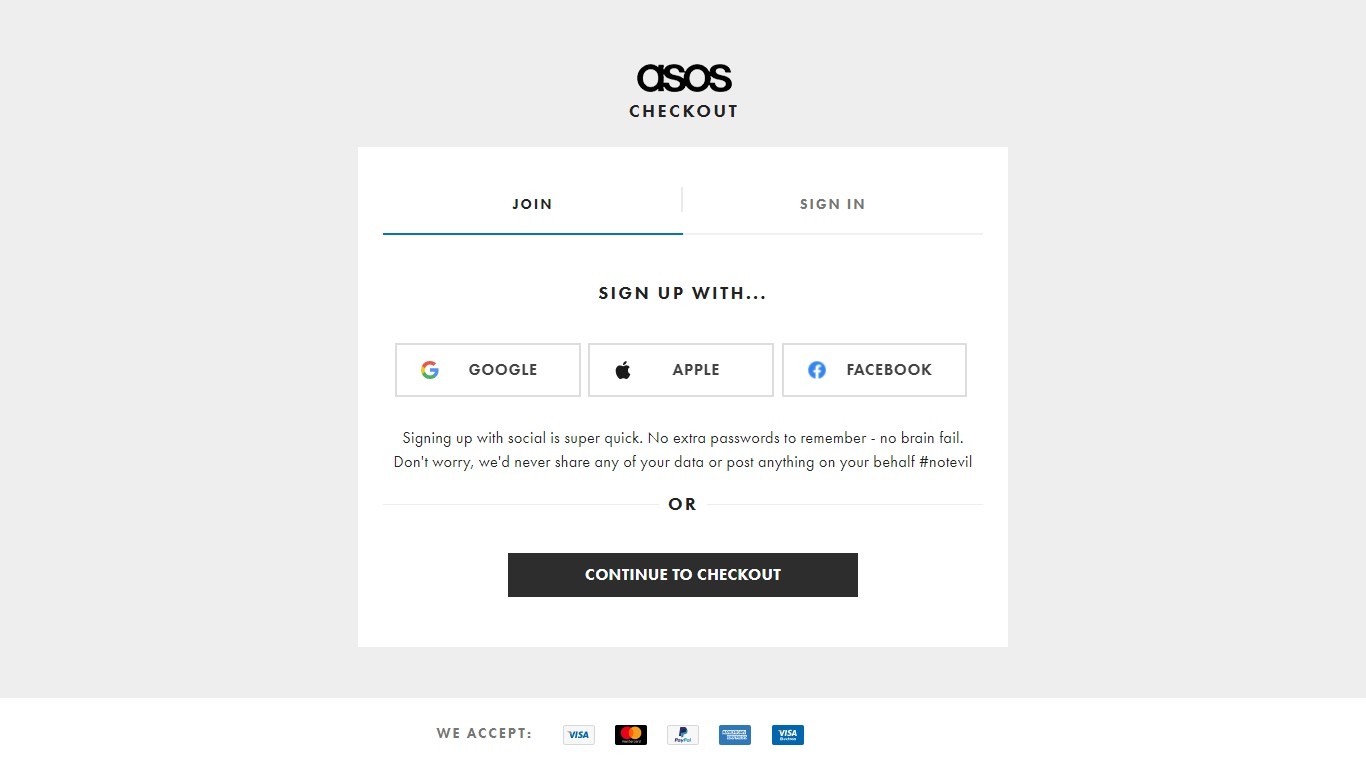
You could as well borrow their idea.
5. Combine Incentives with FOMO
One easy way to get to your visitors’ heart is by offering them freebies: coupons, discounts, price slashes, gift cards, etc. In so doing, you would be giving them reasons to make a buy from you. That means better conversion for you.
Want to make your freebie marketing even more effective? Combine them with the FOMO (fear of missing out) strategy. Did you know that 60% of people would make a purchase within 24 hours because of FOMO? With this approach, you aren’t just giving out freebies but getting your visitors to act quickly.
So, how exactly can you create FOMO? The most common way to do this is by adding a countdown timer to your campaign. When done correctly, this will certainly make your visitors act swiftly.
Here’s an illustration of a popup campaign employing FOMO. As the timer counts down, it gives the web visitor a feeling of urgency. This feeling of urgency then prompts them to register for the event as soon as they can.
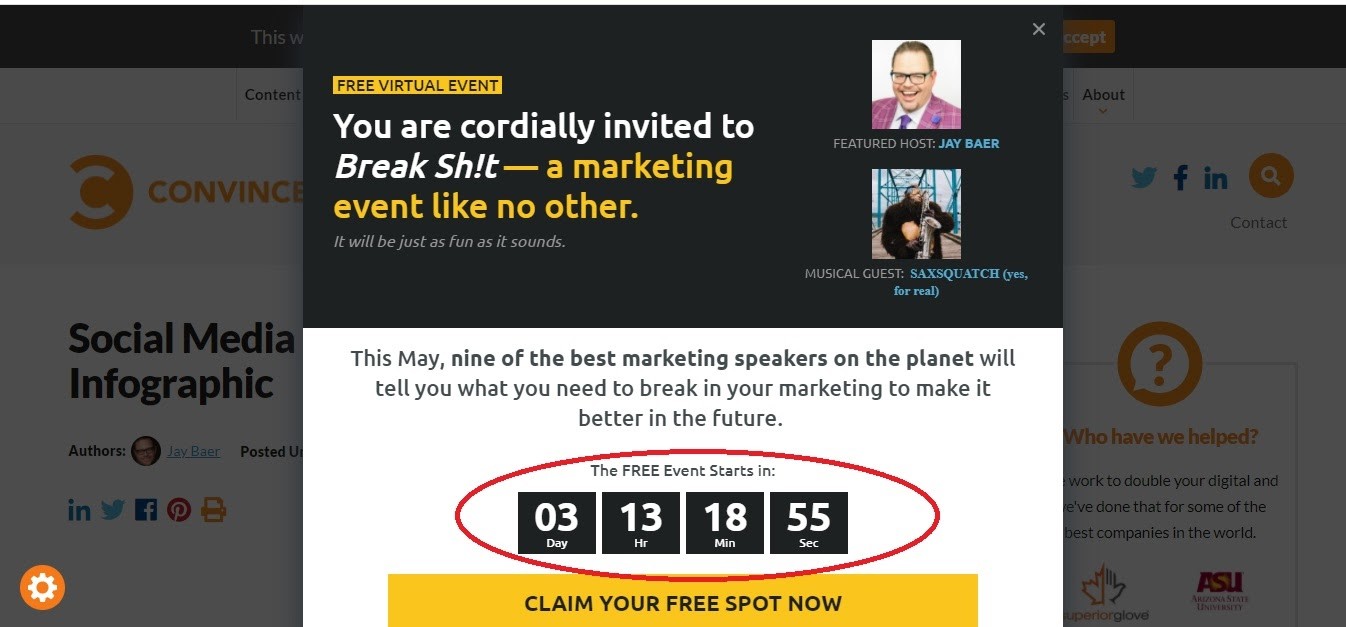
6. Use Live Chat
The live chat feature allows you to interact with your visitors in real-time and provide instant support whenever they need one. Think of it as a customer care line and you as the agent.
Live chat helps you create a more intimate connection with your customers and assure them that you are available to cater to their needs. It makes it easy for your visitors to easily navigate your store, find products, and ultimately make purchases.
Need some inspiration? Goldsmiths, a jewelry retailer, has deployed live chat on its eCommerce site.

With this, its customers can get all the help they need to make their shopping experience seamless.
Looking for the best live chat solution for your Shopify store? LiveChat is a sure bet!
7. Eliminate Extra Costs
Your customers consider additional costs like shipping fees, taxes, and other miscellaneous fees as unnecessary.
While you may not be able to remove all extra costs, eliminating them as much as possible will help. Potential customers find it annoying to finally find a product they like, start the checkout process only to be stopped in their tracks by additional costs they didn’t see coming.
8. Offer Free Shipping
Did you know that offering free shipping can boost your conversion rate and sales as well? According to a survey by Statista, 62% of consumers are more likely to buy items with free shipping.
Even if you offer free shipping with conditions attached, let your visitors know what these conditions are early on in the checkout process. If you can’t offer free shipping at all, make sure to highlight your shipping fees.
9. Make Your Store Easy to Navigate
Poor user experience can ruin your website and, eventually, hurt your sales. One of the ways to avoid this is by making your website easy to navigate.
Nobody likes to shop in a disorganized store.
Sort your products into categories or groups to make them easily accessible.
Need some inspiration? Take Nordstrom, for example. It does an excellent job of displaying its product categories at the top bar of its webpage.
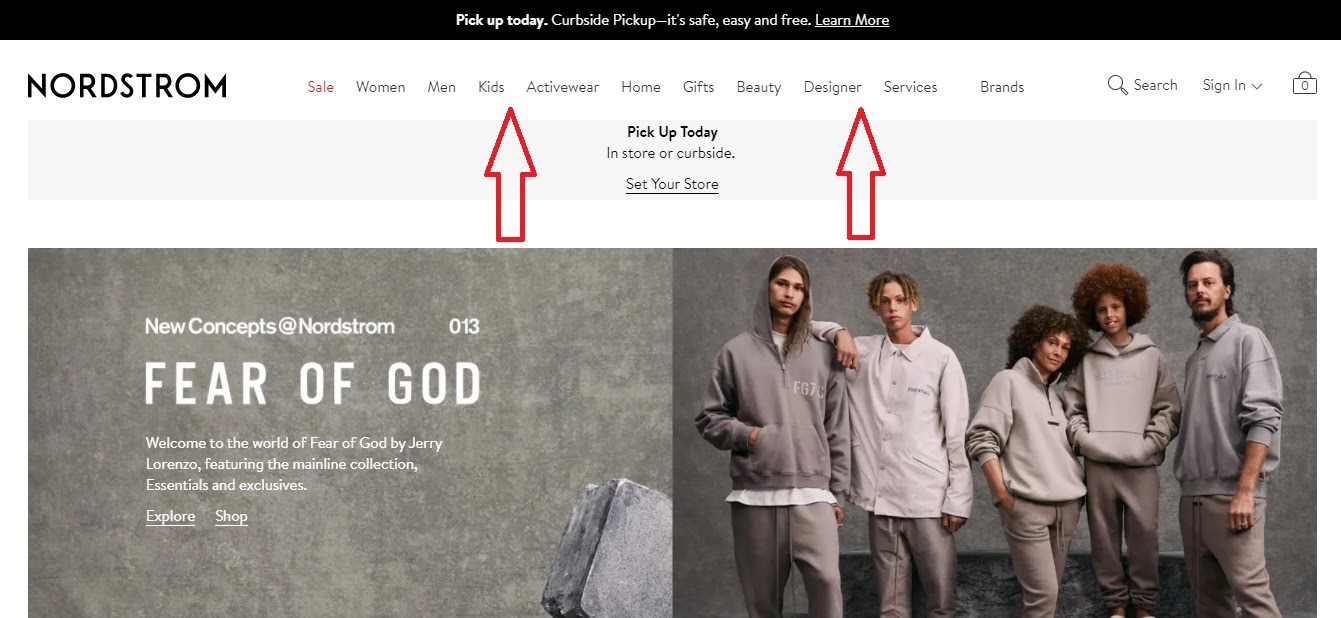
You also want to make sure all text elements are legible and placed in positions where your visitors can easily see them while browsing your store.
Another inspiring example is Walmart. It uses a hamburger menu to make navigation easy for users.
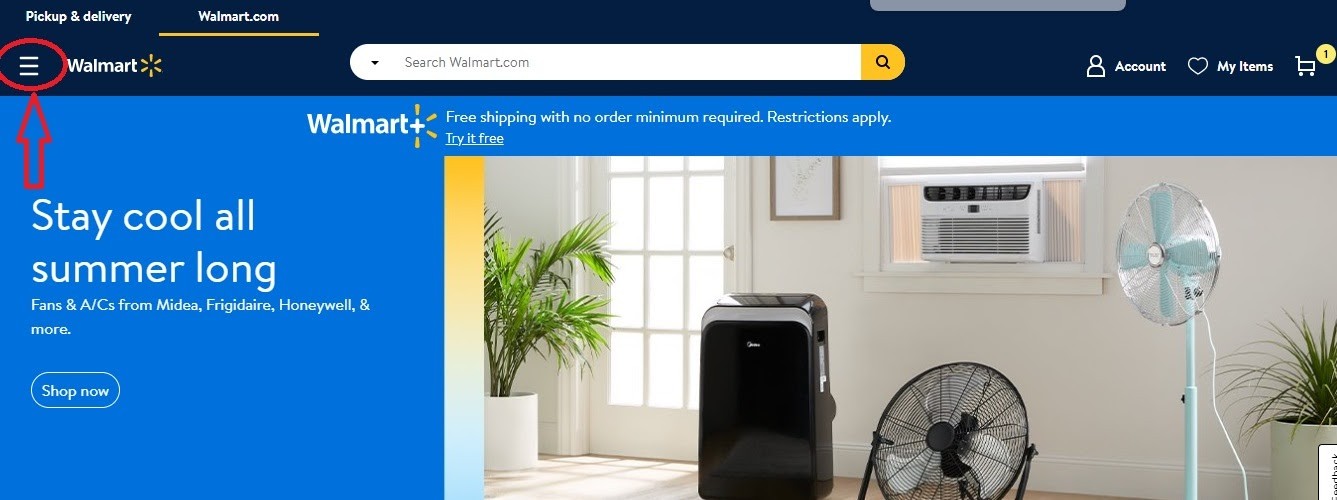
If you click on the menu, it displays a list of product categories on the website as shown below:

The easier it is for your visitors to navigate your Shopify store, the easier it will be for them to make purchases, and the better your conversion rates will be.
10. Optimize Your Search Bar
Another way to increase your Shopify conversion rate is by optimizing your search bar. Search bars are vital to your visitors’ shopping experience. When integrated correctly, a search bar will help your potential customers to find items in just seconds.
Research has shown that people who search for products in your store are most likely to make a purchase. In fact, they are 2.4 times more likely to buy than those you just peruse.
Optimize your search bar so you can convert this intent to sales.
Take for example Amazon’s search bar. It is optimized to display related products as you type in a product name. This makes it easy for customers to find the product they are looking for.
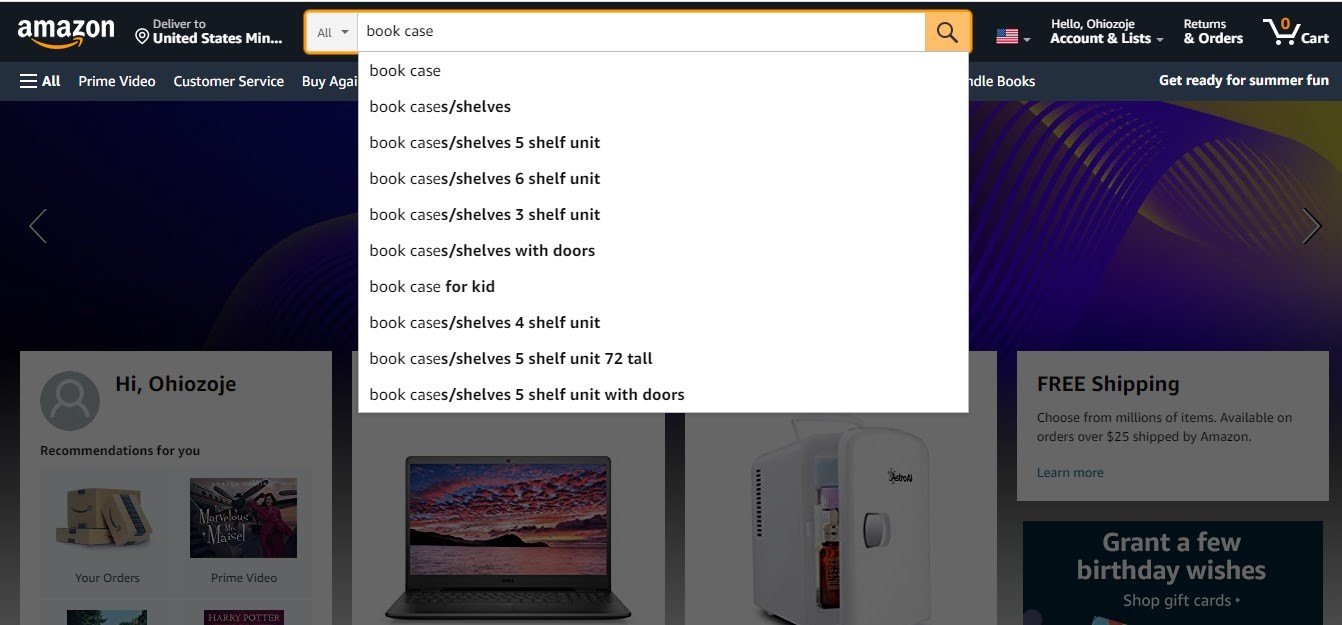
You can optimize your search bar to allow users to filter products according to specific features like prices and brand. Additionally, you can allow for tolerance in spelling so that a misspelled product name doesn’t prevent your visitor from finding what they want.
Need a search bar solution? Algolia is a sure bet.
11. Upload Quality Pictures and Videos
Seeing is believing. One of the first things a potential customer does when trying to make a purchase is to check the product’s image. Or perhaps video.
It shows your visitors what they need to know about a product. This is particularly important to them since they don’t get to touch the products like they would in a physical store.
Thus, you should upload high-quality pictures that catch attention and show the main details of a product. They should also be “zoom-able” so that your customers can get a closer look if they want to.
Better still, you can use videos instead. Videos are equally important and help show details that pictures might miss. Plus, they give a better visual appeal.
12. Write Good Product Descriptions
Writing good product descriptions is essential to selling online. The descriptions you write should contain important information like the dimensions of the item and materials it us made of.
Your product description should accurately describe your product to your customers. It should also explain how it works, the features it comes with, and why they ought to get it.
Here’s a good product description from DollarShave Club:

If you can’t pull this off on your own, get a good copywriter to do it for you. It’ll be worth the price.
13. Use Email Marketing
It is crucial to keep in touch with your customers. Doing so will encourage them to come back to make more purchases from your Shopify store. It is also equally important to stay in touch with people who almost purchased from your store.
One way to do this is by adopting an efficient email marketing service. With just their email addresses, you can remind every abandoning visitor about the products that they left abandoned in their cart.
When sending out emails, add the link to the cart to make it easier for your visitors to complete the checkout process. You can also add a list of the items in their cart along with a limited-time offer to motivate them to complete their purchases quickly.
14. Notify Customers About Products
Wanting to purchase a product only to find out that it went out of stock can be such a bummer. However, you can fix this by simply integrating a “Notify Me” feature on your Shopify store.
This feature will alert your customer when a product that they showed interest in is back in stock. It will help to encourage them to make the purchase quickly and improve your Shopify conversion rate.
15. Customer Reviews
Real customer reviews help you gain the trust of your visitors and improve your Shopify conversion rate. Reviews from previous buyers will assure prospective buyers that they can trust the quality of your products and encourage them to make the purchase.

Encourage customers to leave reviews after they purchase a product. A good way to do this is to send an email asking for a review or rating. In the email, include a link that leads directly to the review page.
16. Publish Good Content
Creating and publishing good content on your Shopify blog page will go a long way in attracting more visitors to your store. It also helps you rank better on Google and other search engines.
How to go about this? Shopify stores come with a built-in blog editor. Use it maximally. Create and publish content your target audience will find helpful.
By doing so, you won’t just be increasing your traffic; you’d also be establishing yourself as a thought leader in your niche.
Thought leadership shows your expertise and makes your visitors trust your brand even more.
BioLite, an eCommerce store for outdoor sports gear, has a blog where they share valuable content with their audience. Their posts also answer questions their customers might have about using their products.
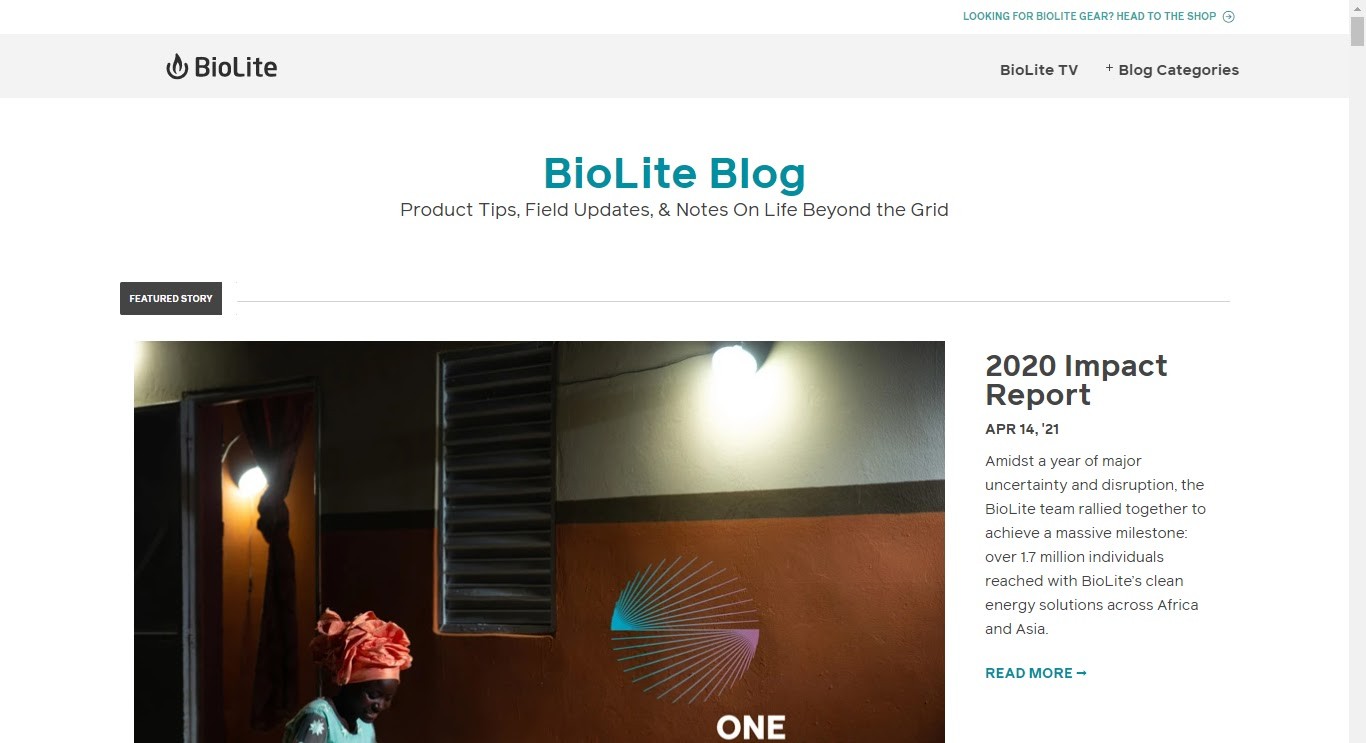
Final Thoughts
There you have it: tips and strategies for improving your Shopify conversion rates. Apply these techniques and watch your conversion rates steadily increase.
Looking for more tools to optimize your Shopify store? Sign up on Adoric today for free. You’ll get access to the tools and resources that can help you build the Shopify store of your dreams.

